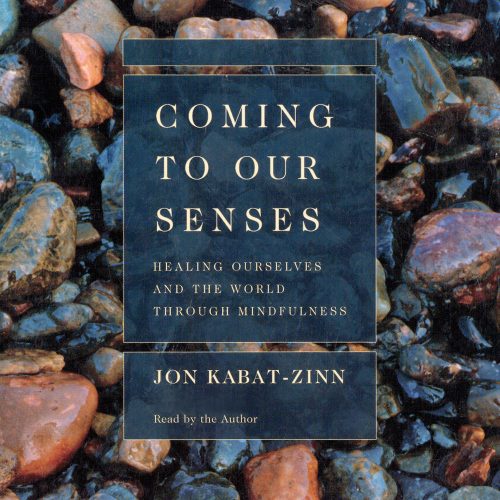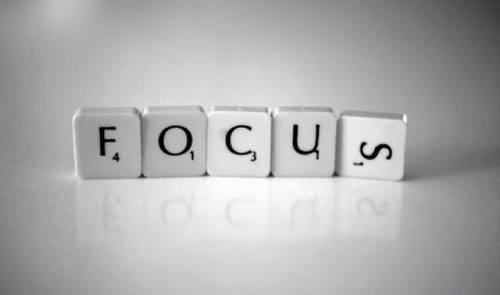
A…ttent…ion

Kabat-Zinn’s Coming to Our Senses
I recently stumbled upon Jon Kabat-Zinn’s Coming to Our senses: Healing Ourselves and the World Through Mindfulness (2005).
While reading through the 609 pages felt tedious at times, there was one section which really touched me and that I would like to share. On page 146 he writes:
“(…) much has changed for us in the last hundred years, as we have drifted away from intimacy with the natural world and a lifetime connectedness to the community into which we were born. And that change has become even more striking in the past fifteen or so years, with the advent and virtually (pun intended) universal adoption of the digital revolution. All our “time-saving” devices orient us in the direction of greater speed, greater abstraction, and greater dis-embodiment and distance. It is now harder to pay attention to any one thing and there is more to pay attention to. We are easily diverted and more easily distracted. We are continuously bombarded with information, appeals, deadlines, communications. Things come at us faster and furious, relentlessly. And almost all of it is man-made; it has thought behind it, and more often than not, an appeal to either our greed or our fears. The assaults on our nervous system continually stimulate and foster desire and agitation rather than contentedness and calmness. They foster reaction rather than communion, discord rather than accord or concord, acquisitiveness rather than feeling whole and complete as we are. (…). In the face of all this speed and greed and somatic insensitivity, we are entrained into being more and more in our heads, trying to figure things out and stay on top things rather than sensing how they really are. In a world that is no longer primarily natural or alive, we find ourselves continually interfacing with machines that extend our reach even as we succumb to disembodying ourselves through their addictive use (…).”
This is one depiction of mind-body-disconnection in our modern society, and what I, as a therapist trained in Movement Observation and Assessment, observe every day. Not just in others, but also in myself. Through my thesis work, which included mindfulness practices and meditation, I had to realize that I was paying part-attention to everything, but full-attention to nothing. As a result, my life seemed to fly by without me noticing. I mean, quite literally! To notice something, it must enter awareness and to realize that something is entering awareness one must pay attention to it. I constantly felt stressed, dissatisfied with the things I had or the place I was in. Thinking that I simply did not have enough time to do the things I really wanted to do I felt isolated and alone. In reality I spend up to 5 hours each day checking my phone, emails, browsing the internet, reading blog posts, or watching Netflix. None of this is necessarily bad, but I truly wasn’t even aware how much time I spend doing those things, while complaining about “not having enough time.” Learning to pay full attention to the things I do (supported by daily meditation/ mindfulness practices) helped me a lot to use my time effectively and to do the things I find value in.

Fully paying attention
Kabat-Zinn further proposed an interesting hypothesis on page 149 about one of the most common “illnesses” diagnosed in children nowadays: ADHD. He writes:
“It is telling and actually tragic that large numbers of young children are now being medicated for ADD or ADHD, down to even three years old. Could it be that in many of these cases, it is the adults who are entraining the children into distraction and hyperactivity, if such behaviors are not actually normative for these times, and therefore strictly speaking, normal under the circumstances? Maybe the children’s behavior is only a symptom of a much more pervasive dis-ease of family life, and life in general in this era, as is likely the case for the rampant obesity epidemic we are seeing in children and adults. (…). So if we adults are impelled to be distracted constantly to one degree or another, and have a hard time focusing on any one thing for long, is it any wonder that more and more children might be that way too since their rhythms from the time they are born are, to an extraordinary degree, especially as newborns and infants, so attuned to ours?”
While this paragraph looks specifically at parents, I feel the same can be said about therapists. Attunement is one of the most effective tools to create change in clients as it allows one to be empathic and to affect the internal world of the client. However, if I – as the therapist – am only partly paying attention to my clients and their internal world, if my mind is constantly wandering into the future without seeing what is unfolding in the moment, or if I am occupied with worrying about the most effective intervention (all things that I have done), then I am sabotaging and limiting the change I can promote. In this sense, being mindful and fostering the ability to fully pay attention to one thing at a time appears to be a requirement for effective therapy, and I encourage everybody, especially aspiring therapistS, to explore their own ability to be fully present.
If you are curious, I challenge you to “simply” sit down for 5 minutes and to fully focus on your breath. It might be helpful to focus on an area of your body where you feel the breath most prominently. If you have a hard time doing that, you can comment on each in-breath with thinking “in” and out-breath with “out”. Whenever you realize that your thoughts are starting to wander off, just gently bring the focus back to your breath. Don’t be upset about it, as it is normal. When I started, I could hardly focus for longer than two in breath. It is much harder than it sounds.
